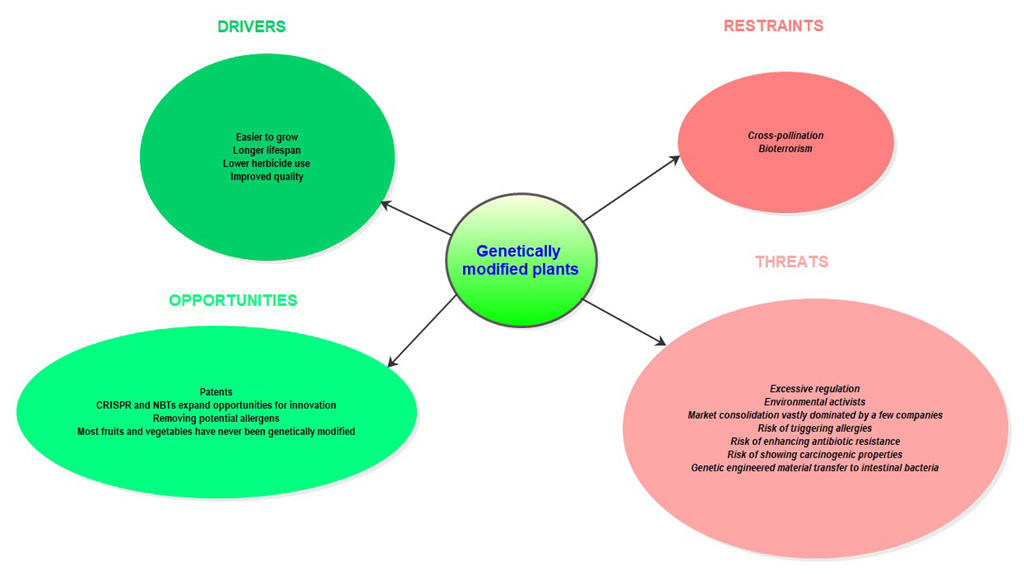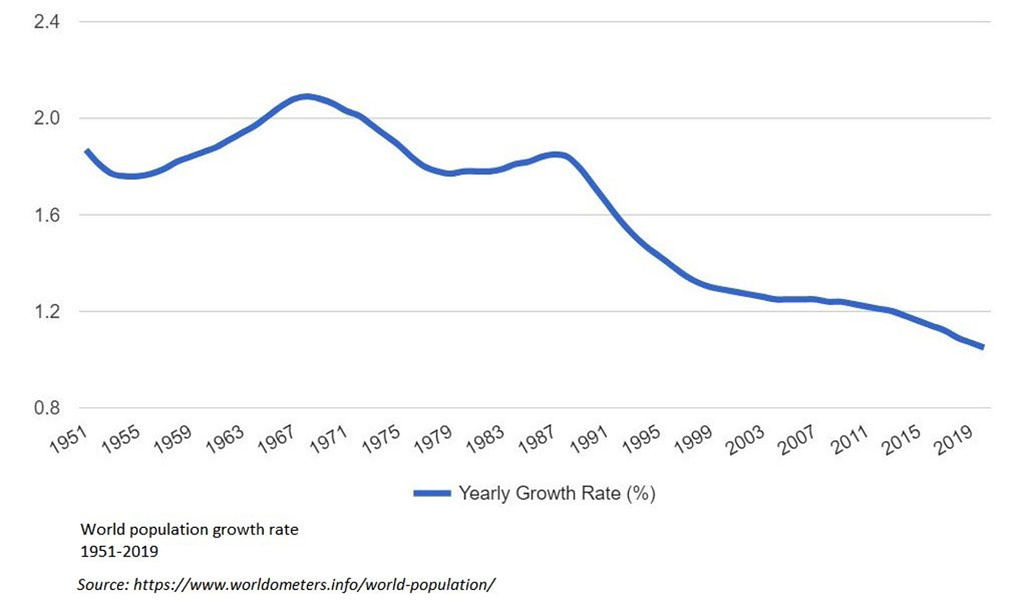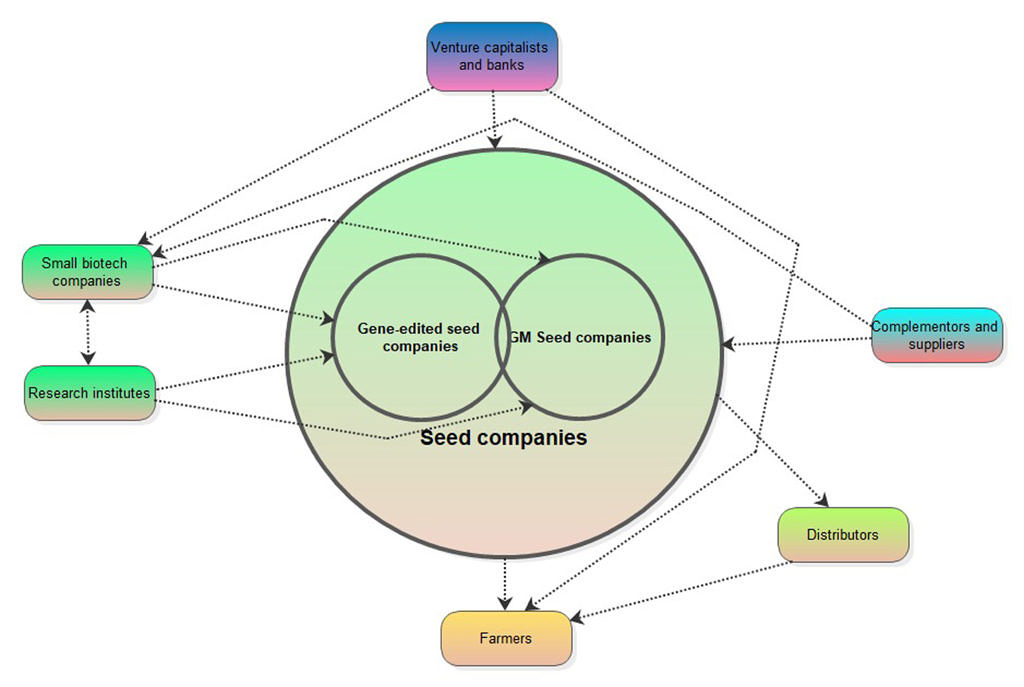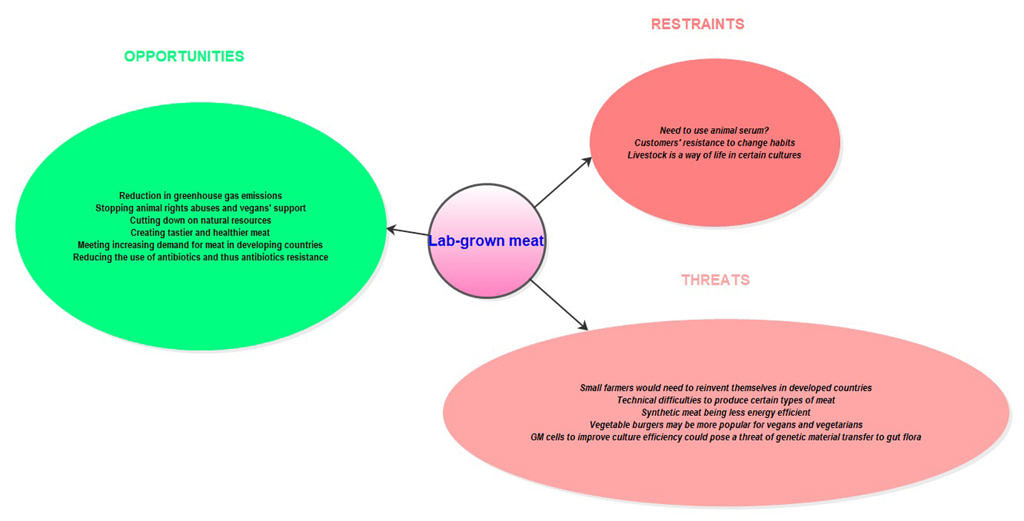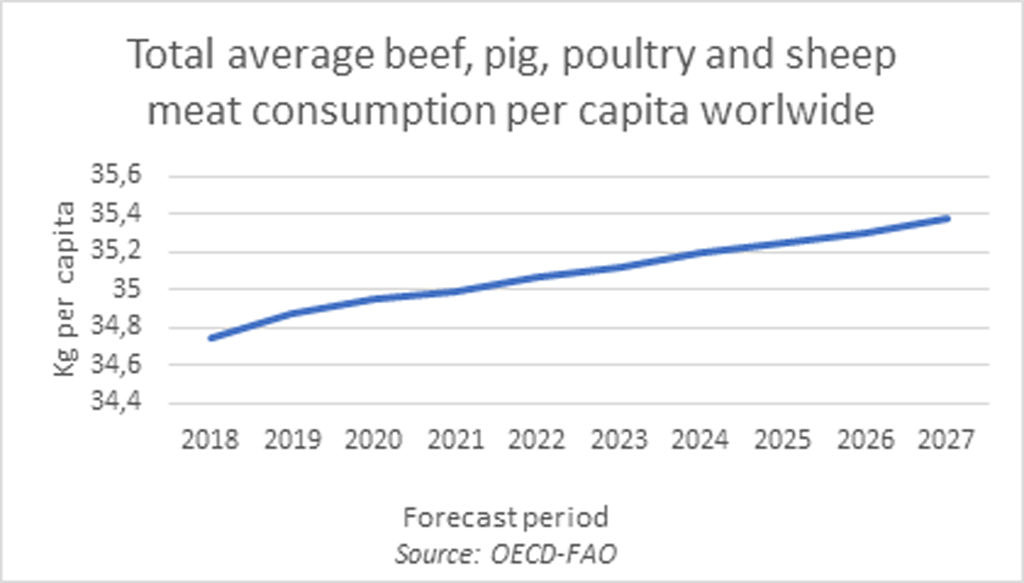In this post we pretend to discuss the present and future of synthetic meat having a look at the past and present of gm food. This is due to the fact that some lay people may think it is basically the same as gm plants are also often based on genetic manipulation.
Can the genetically modified plants market give us an idea of what the future holds for synthetic meat?
Background
Despite some slumps during the last 25 years, investors and other stakeholders have had well founded high expectations in relation to biology as a scientific and profitable discipline, and particularly biotechnology and genetics as one of its branches. This is a natural feeling as genetics is the pattern basis of living organisms, and being capable of manipulating the genome makes humans, or we should rather say scientists, some kind of gods. Just genetics may cover huge knowledge areas as diverse as medicine, energy, chemicals production, farming, or livestock to mention a few. Synthetic biology, and thus synthetic meat, is fashionable once again and is expected to cause a new technological revolution.
Genetic engineered plants have been commercialized since the nineties and have opened a bunch of new opportunities for innovation and advantages for farmers and consumers, despite strong opposition from activists. On its side, synthetic meat (also known as cultured or lab-grown meat), which is not available on the market yet, is also expected to offer huge advantages and opportunities to innovate in the coming years.
For more information regarding genetically modified crops and agricultural development, you may have a look at this book which analyzes the impacts of current and possible future GM crop applications. This book shows that these technologies can contribute substantially to sustainable agricultural development and food security.

Genetically modified (GM) food is not necessarily the same as synthetic meat (also known as cultured meat)
Genetic engineered food, which we should rather call GM plants, and synthetic meat have certainly biological principles in common, but production processes are not necessarily the same.
Whilst GM plants are based on genes inserted or replaced to produce a predetermined type of protein that may intervene in a specific biochemical path, or be of a specific interest as such, synthetic meat in the beginning is produced starting from pluripotent or multipotent cells that are not necessarily genetically modified, though this move is also under development.
Genetic applications are not limited to crops in the food industry. Crowdfunding is currently helping BioCurious, a community biotech lab based in California, to research on synthetically producing Real Vegan Cheese by inserting genes into yeast. These genes translate into the appropriate proteins, known as caseins, that can be extracted and mixed in precise quantities. Perfect Day is another company focused on animal-free dairy products making use of modified microflora that expects to commercialize its products in a short time.
Genetic engineered plants have already shown important advantages
Since 1994 when Calgene started marketing its Flavr Savr tomato, at least 31 plant species have been genetically modified and approved for commercial release in at least one country. Widespread genetically modified crops include soybean, maize, cotton, and canola among others. Distribution among countries worldwide is still uneven though and depends on local regulations, but just in the United States it is estimated that 90% of seeds used to plant soy and corn belong to GM crops. China, Argentina, Canada, Australia, and Mexico have also planted genetically modified crops in a large scale. In the European Union importation of genetically modified organisms is regulated at European institutions level but individual member states decide on cultivation regulations.
|
Country |
GM plant species approved for cultivation |
GM plant species approved for human consumption |
|
European Union |
Carnation, maize and potato |
Argentine canola, cotton, maize, potato, soybean, rice, soybean and sugar beet |
|
United States |
alfalfa, apple, Argentine canola, chicory, cotton, creeping bent grass, flax, maize, papaya, plum, potato, rice, rose, soybean, squash, sugar beet, tobacco and tomato |
alfalfa, apple, Argentine canola, chicory, cotton, creeping bentgrass, flax, maize, melon, papaya, plum, potato, rice, soybean, squash, sugar beet, sugar cane, tomato and wheat |
|
China |
cotton, maize, papaya, petunia, poplar, rice, sweet pepper and tomato |
Argentine canola, cotton, maize, rice, soybean, sugar beet, sweet pepper and tomato |
|
Japan |
alfalfa, Argentine canola, carnation, cotton, maize, papaya, rice, rose, soybean and sugar beet |
alfalfa, Argentine canola, cotton, maize, papaya, potato, soybean and sugar beet |
|
Argentina |
alfalfa, cotton, maize, potato and soybean |
alfalfa, cotton, maize, potato and soybean |
|
Canada |
alfalfa, apple, Argentine canola, flax, maize, Polish canola, potato, soybean and sugar beet |
alfalfa, apple, Argentine canola, cotton, flax, maize, papaya, potato, rice, soybean, squash, sugar beet, sugar cane and tomato |
|
Australia |
Argentine canola, carnation, cotton, rose and safflower |
alfalfa, Argentine canola, cotton, maize, potato, rice, safflower, soybean, sugar beet and wheat |
|
Mexico |
alfalfa, cotton and soybean |
alfalfa, Argentine canola, cotton, maize, potato, rice, soybean, sugar beet and tomato |
|
Genetically modified plant species for some trait(s) that have been approved for cultivation and human consumption at some point in time in some relevant countries. Source: ISAAA’s GM Approval Database. http://www.isaaa.org/gmapprovaldatabase/. |
||
The ultimate purpose and benefits of these genetically modified seeds cover several fields. For farmers these seeds provide resistance to insects and tolerance to herbicides, heat, cold or droughts; better look to make them more appealing; and longer shelf-life. For consumers this type of products may provide specific nutrients, including calcium and protein; or even seedless fruits. For humankind a longer shelf-life may mean a better distribution of food worldwide even to very remote areas of the planet considering that there is an excess of more than 15% of food produced in rich countries. Genetically modified food has been proposed as a sustainable mean to feed the increasing human population in the future presently estimated at 7.7 billion and currently growing at a rate of about 1.07% down from 2% in the sixties. The world population is projected to reach 9.7 billion by 2050 despite declining growth rates.
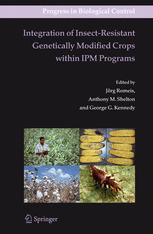
Legislation on genetically modified organisms (GMO) changes from country to country
Whilst in Europe genetically modified food must be labelled as such according to GMO (genetically modified organisms) legislation, in the United States this is not required, and only certified organic foods guarantee to a certain extent that no genetically modified organisms have been used in the manufacturing process. Nonetheless genetically modified organisms are subject to strict regulation, particularly in the case of human consumption.
Strictly speaking, gene-edited crops that do not carry DNA from other species are not treated as severely as GM crops from a legal point of view in several countries, for example the United States, Brazil, Canada and Australia. This is the trend in spite of using the latest genetic technologies such as CRISPR and other new breeding techniques (NBTs) because this type of genetic manipulation has been done for hundreds of years selecting the desired plants properties through the Mendelian method. Relaxing legislation in recent years for genetic manipulation that does not involve genes from different species has helped big and small companies and universities to innovate developing new seeds with outstanding properties that are already available on the market. Activists still oppose these practices and fight for regulating gene-edited crops just like GMOs as it has happened in Europe.
Whether this is applicable to synthetic meat is still to be seen as companies try to innovate with new products in the future. In the beginning, apart from consumers’ information readily available, there should not be any problem as there is no risk of genes crossing over to other species with synthetic meat.
A part of the population still disapproves genetically modified organisms
However genetic engineered food and synthetic meat come with their own shortcomings. Critics discuss about long-term health consequences in humans and unpredictable changes in nature when considering genetic manipulation. In the case of food, the concept of substantial equivalence to genetically unmodified counterparts has been introduced by regulatory agencies as one step in order to evaluate safety of any identified differences. No doubt that necessary tests for the overall safety of a GM product are costly and must be factored in prices, but still GM crops have remained competitive.
Genetically modified food is suspect, most probably unfoundedly, of an increase in the number of people suffering from food allergies due to new proteins translated from inserted genes or secondary metabolites that may result from any genetic changes. So far allergenicity in genetically modified food has not been demonstrated to be more of a problem than its non-genetically modified equals. FAO and WHO have recommended that any new protein introduced in genetically modified food should be compared to all recognized allergens establishing a procedure to test and follow up potential allergenicity in a sort of surveillance system. It is however difficult to estimate whether changes in the plant metabolism cause new secondary metabolites or significant changes in concentration of the existing ones including natural endogenous toxins.
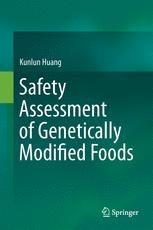
In any case allergens could be removed with state-of-the art technology in the near future, and this can also be applied to the synthetic meat industry. Even more, genetically modified food can be produced totally free of known allergens contained in their non-modified counterparts thus providing an advantage for consumers. An example could be suppressing the enzyme that intervenes in the biochemical path to produce gluten in wheat for diets followed by people suffering from celiac disease.
Genetic engineered food has also been pointed as the ultimate cause of antibiotic resistance with no consistent proof, but even if that were the case more opportunities would be opened for biotech firms in R&D. Antibiotic resistance is intrinsic to nature as health scientists know for a fact that an increase in antibiotic resistance in bacteria is often the consequence of antibiotics abuse in humans to treat an infection as is true of penicillin. In nature herbicide resistance happens naturally in living organisms as is the case of different types of weeds that have become resistant to atrazine.
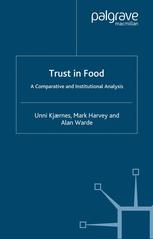
Despite some articles in scientific magazines, genetically modified food has not been proved to have any link with cancer to date. Once again it is important to state that the concentration of present metabolites and new secondary ones as well as endogenous toxins in certain GM plant species could be altered and thus carry health hazards, for which long-term studies are necessary. Still many processed and cured meat are currently produced making use of carcinogenic compounds such as nitrates, which basically means that we already have that problem that could probably be solved with the development of synthetic meat.
Critics have also discussed the possibility of genetic engineered material transfer to intestinal bacteria as is the case of Bt corn, a type of GM corn with inserted genes that produce a pesticide naturally encoded by soil bacteria Bacillus thuringiensis. This pesticide has been traditionally sprayed over conventional corn by farmers and later washed out though in the case of Bt corn the pesticide is produced by the plant itself.
Nature conservation is also a matter of concern for activists and even some farmers. The first case of cross-pollination was reported in autumn 2000 in the United States between a genetically modified crop that was too close to an unmodified harvest, and probably more than 500 cases have been well documented. Cross-pollination and unintended transfer of genes that yield plant varieties, which could be patent protected, may bring some headaches for conventional and organic farmers in terms of food quality, labeling and legal issues. Cross-pollination may also disperse plant varieties that carry inappropriate levels of secondary metabolites that can be dangerous thus losing control in the spread of genetically manipulated organisms. This cross-pollination seems unavoidable for the moment regardless any attempts to establish measures such as buffer zones. Still, scientists are also developing genetically modified organisms that can only fertilize with manual assistance to avoid cross-pollination cases. Pollination control systems have been introduced making use of genes generally sourced from bacteria as is the case of Argentine canola, chicory and maize crops.
Probably one of the main causes for worry is companies’ intellectual property protection. Farmers and customers often state that companies benefit most from GM seed varieties that are still patent protected and thus confer market exclusivity for their use for a minimum of twenty years in most countries. As an example, pollination control systems in maize, authorized mainly in the United States, have been dominated by DuPont (Pioneer Hi-Bred International Inc.) and Bayer CropScience. However, these patents finally end up losing their protection and contribute to a wealth of knowledge that can be used by other companies and public organizations. For example, patents derived from core international patent publication number WO9626283 that describes a method to obtain male-sterile plants applied by Plant Genetic Systems NV (acquired by Bayer CropScience in 2002) in February 1996 have already lapsed in all countries assigned. Another example could be patents stemming from international patent publication number WO9617945 filed by Pioneer Hi-Bred International that describes a reversible nuclear genetic system for male sterility in transgenic plants with priority number dated in June 1995 which have also gone off patent in all countries, though the company has resorted to file other patent applications worldwide with innovative methods related to plant sterility since 2000. A more remarkable case is Monsanto’s Roundup, the trade name for the company’s broad-spectrum herbicide glyphosate, for which genetically modified resistant crops, branded as Roundup Ready Soy I, were developed and whose patents expired in 2014 thus facing competition from other manufacturers. Yet more, the University of Arkansas has released free versions of Roundup Ready Soy that can be used by any farmer at will. It is estimated that the discovery, development, and authorization of a new GMO plant may cost more than $140 million and without market exclusivity no company would ever embark on those investments.
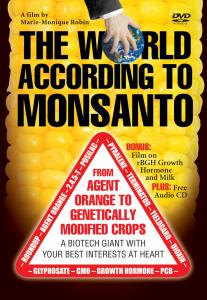
Still the latest concern is related to bioterrorism. The introduction of certain harmful genes in insects or pollen spread over extensive cultivation areas could cause havoc in the population creating a sort of cyberattack-like dynamics with attackers and defenders but with more serious consequences. This risk is enhanced by the modern gene editors and genetic technologies. Nevertheless, opposing GM crops or research on genetic manipulation will not stop this threat but on the contrary it may even be counterproductive due to lack of knowledge to respond. It seems obvious that there should always be security measures to neutralize any accident or bioterrorist attack.
In any case disproportionate concern about genetic manipulation improvements could restrict scientific advancement, which on the other side seems unavoidable.
Competitive structure for the genetically modified plants market
The commercial seed market worldwide was estimated at more than US$50.0 billion in 2018. There are approximately 7,000 large and small seed companies operating worldwide. Approximately 50 companies have GM plants authorized in some country in the world. Many conventional seed companies are also commercializing gene-edited seeds and may be developing GM plants that could be launched into the market in the future.
According to Yahoo Finance four agrochemical companies hold more than 60% of the global seed market in 2019 commercializing GM and non-GM seeds, which causes fears for market consolidation. These companies are Corteva Agriscience (formerly DowDuPont, United States), ChemChina (China), Bayer (Germany) and BASF (Germany). Other important seed companies not commercializing GM seeds for the moment include Groupe Limagrain (France), Land O’Lakes (United States), KWS AG (Germany), Sakata (Japan), DLF-Trifolium (Denmark), or Takii (Japan). The growth and development of this market is mainly based on the world growing population and the climate change.
Corteva, ChemChina, Bayer and BASF are the result of consecutive mergers and acquisitions during the last 20 years. Bayer acquired Monsanto, the best known GM seed company worldwide, in 2018; the state-owned ChemChina acquired the Swiss Syngenta in what was perceived as a delicate financial operation; Dow Agrosciences merged with DuPont to form Corteva; and BASF reached an agreement with Bayer AG to purchase seeds and pesticides assets in 2018 after the US Justice Department forced Bayer to sell its crop science division before purchasing Monsanto. Formerly to mention a few, Monsanto had acquired 10 organizations since 2005; ChemChina acquired 60% of Adama Agricultural Solutions, an Israeli agrochemical company with the highest generic pesticides portfolio in 2011, in a strategy to expand its own domestic market share; and Bayer CropScience acquired Argentinian Biagro Group in 2014 and SeedWorks India Pvt. Ltd in 2015. ChemChina is a good example of market development as the company’s overseas sales amount to approximately 67% of its total revenues, and also has interests in other chemical industries just like the other top three.
Corteva’s policy is to maintain a focus at a local and regional level worldwide making use of procurement teams and reinforcing relations with local suppliers emphasizing a public code of conduct. On its side, Bayer CropScience offers tailor-made solutions on a unique combination of seeds and traits, crop protection and digital tools for individual farmers in order to achieve the best harvest and a sustainable growth, and regarding suppliers the company particularly values innovation, efficiency and sustainability.
A whole industry surrounds this market apart from distributors and license agreements such as GMO testing market or other chemicals. Small biotech companies and research institutes are also involved looking for improvements in crops often in collaboration with these GM multinationals. The agricultural business includes relevant complementors that may comprise fertilizers, greenhouses, irrigation systems or growing lamps among others.
Although the seed market may look oligopolistic and dominated by a bunch of very powerful companies it does not mean there are not any opportunities for smaller seed companies and research institutions even creating collaboration agreements or looking for venture capital in a sort of co-opetition relationship. CRISPR-Cas9 and new breeding techniques (NBTs) are bringing along new prospects for shortening the development of gene-edited crops and lowering costs that may compete with more efficient solutions and innovations for farmers and customers. On the other hand, most fruits and vegetables remain unattended and offer opportunities for market development too.
For example, in respect to herbicide tolerance most products are focused on glyphosate, glufosinate and sulfonylurea, and to a lesser extent on 2,4-D and oxynil, but more research would lead to more innovative and efficient herbicides that are less hazardous to humans and animals. Pollination control systems are mainly focused on maize, Argentine canola and chicory, but these systems could also be extended to other plants. There are some other interesting potential traits worth to be researched.
Lab-grown meat could allure several groups of people
Lab-grown meat is also known as cultured meat, in vitro meat, synthetic meat or even clean meat. This type of meat is the result of growing muscle cells in a nutrient serum, generally made from animal blood, to end-up forming muscle fibers.
Lab-grown meat pursues goals that may appeal several people’s interests and ethics. The first goal is related to the environment, the second is about feeding an increasing population worldwide, the third involves animal rights, and the fourth is associated to gourmets and culinary innovations.
Environmentalists should be enthusiastic about the potential benefits of a prospective well-established synthetic meat industry. There are thousands of studies evaluating the huge environmental impact of the conventional meat industry.

Farm animals are thought to be accountable of approximately 15% of greenhouse gas emissions in the planet.
According to the United Nations Environment Program the rainforest landscape in South America is being cleared for cattle to produce meat and reckons that one average quarter pounder beef burger drains around 1,695 liters of water from valuable resources. Other studies calculate that it is necessary 100 times more water to produce 1 kg of animal protein than producing 1 kg of grain protein.
Figures vary depending on technology and location, but in respect to energy consumed to produce meat we easily come across studies suggesting that 25 kilocalories of fossil fuel energy are consumed for every 1 kilocalorie of meat protein produced whilst ratio for corn protein is 2.2:1.
However, let us not jump into conclusions yet as proteins constitute approximately 20% of a human body and vegetable proteins often lack a good balance of the 20 essential aminoacids for humans, which are the basic molecules that form them. Proteins form part of body structures and also are crucial for metabolism.
The cost of producing farm animal meat is also very high considering that it is necessary 5-7 kg of grain to produce half a kilogram of feedlot beef.
Feeding the world’s increasing population together with higher purchasing power and thus higher meat consumption in developing countries could augment environmental problems in the future. As mentioned above, some experts assure that by 2050 the population worldwide could reach 9.2 billion. The world average consumption of meat (beef and veal, pork, poultry and sheep meat) per person worldwide was estimated at 34.74 kg in 2018 according to OECD-FAO with an increasing trend in developing countries and forecast to reach 35.37 kg in 2027.
By 2050 even the most conservative estimates would predict that the average meat consumption per capita for these kinds of meat can easily reach 38 kg per annum thus making a total of 349.6 billion kg consumption worldwide. In 2018 just in the United States the average consumption per capita for these four types of meat was calculated at 101,304 kg per annum whilst EU28 corresponded to 69.49 kg per capita.
Poultry and pork are the most popular types of meat worldwide though it obviously varies depending on the country’s culture and customs. For example, EU28 consumes more pork (32.31 kg) and poultry (24.47 kg), whilst Turkey consumes more poultry (17.72 kg) and beef (10.50 kg) with very low demand for pork (0.06 kg). In respect to the environment, let us note that pig slurry causes an important impact with high cost in managing operations.
The Environmental Science and Technology magazine published a life-cycle assessment study of lab-grown meat in 2011 where it was assured that cultured meat at industrial scale would require 7-45% less energy than producing animal farm meat in Europe with the exception of poultry; 78-96% lower greenhouse gases emissions; 99% lower land use; and 96% lower water use.
On the other hand, synthetic meat could bring along the possibility of being more innovative creating new and tastier meat for gourmets with ground-breaking characteristics such as suitable amounts of vitamins and fats to make it even healthier. Prices could be very competitive for valued scarce meats, such as red tuna, that are now too costly for the public and in danger of extinction, once scalability for producing them synthetically is resolved.
Farm animal welfare has also become a matter of major concern in developed countries. According to The American Society for the Prevention of Cruelty to Animals (ASPCA) 94% of Americans believe that animals raised for food should have a life free from abuse and cruelty, which nowadays is almost a utopia with current practices. In other developed countries the opinion trend is similar, and the topic is very sensitive especially in younger generations. According to surveys conducted in the United Kingdom and the Netherlands above 60% of respondents were in favor of promoting lab-grown meat as an alternative to farm animal meat.
Then again, there is no doubt that veganism and vegetarianism are rising and therefore new commercial businesses aiming this growing market are spurting. Synthetic meat could also appeal vegans in the future once technical difficulties are finally resolved for avoiding use of any minimal part of animals.

A veggie burger vs. a lab-grown burger
A veggie burger is generally made of vegetable proteins and often processed soy and vegetable oil. Soy protein is said to contain all essential aminoacids human beings need to take but two essential aminoacids are only present in small quantities, and on top of that this processed soy is suspect of being linked to health problems related to the endocrine system because of phytoestrogens and a solvent used that is known as hexane. Other solvents used to produce vegetable oils have also been put in question in relation to health hazards.
Plant-based meat, such as the branded Impossible Burger or the Beyond Burger, is a vegetable product that mimics meat making use of heme, a complex that includes a metalloprotein that can be produced through genetically modified soybean. The importance of heme is that it can provide the same taste and color as if it were real meat.
A lab-grown burger would be technically made of real muscle fibers together with other animal tissues that would make it tastier. Cells that end up forming these fibers grow in a nutrient serum that at the moment is generally made from animal blood, which violates vegans’ ethics. The final goal for lab-grown meat is indeed to be produced through animal-free methodologies.
In terms of environmental resources, in the foreseeable future a veggie burger will be much more efficient to produce than a lab-grown burger.
Costs of producing lab-grown meat
Mark Post, professor at Maastricht University, was the first scientist to produce a lab-grown minced meat burger in 2013 with a cost estimated at US$330,000. This first trial was certainly a big achievement despite the cost and being a burger not so delicious as expected according to the two elected tasters. Apparently, the lack of fat tissue made it less appetizing.
However, that was just a prototype and thus very costly as lowering costs is mainly a matter of refinement and scalability. There are estimates of a cost of less than US$5 per unit for some types of burger in an industrialized context making use of large bioreactors, which could happen in approximately three to four years or even earlier as reported by companies involved in this field. These large bioreactors with a minimum volume of 25,000 liters to feed 10,000 people would provide the necessary nutrients and stimulation to work out the muscle cells. Smaller bioreactors could also be possible to meet lower needs.
Growing lab-meat will eventually be more energy-efficient than conventional meat taking into account that energy will only be spent on a product that we will use entirely, where there will be no need to discard bones, fur or other organs.
Methodologies and technical difficulties to grow synthetic meat
Meat is basically formed by muscle cells and tissue. Methodologies to grow synthetic meat are based on pluripotent stem cells. In theory at least, stem cells can multiply by cell division ad infinitum. However, muscle cells lose their ability to divide once they are made with the exception of smooth muscle cells that can retain their ability to divide too.
Pluripotent stem cells, which can potentially turn into any type of tissue, may be taken from embryonic stem cells, adult stem cells or induced stem cells. Embryonic stem cells are developed from a blastocyst, which is an early-stage pre-implantation embryo. Adult stem cells, also known as pluripotent somatic stem cells, are permanently present in the body ready to replace damaged tissues and therefore can hypothetically be turned into any desired type of cell such as muscle cells. Induced stem cells are obtained through epigenetic reprogramming, that is without making any changes in the genome but inducing or repressing genes expression to obtain different phenotypic results. Stem cells are commonly used in research and regenerative medicine nowadays and it is important to notice that these cells have nothing to do with immortal cell lines such as HeLa, which are the consequence of mutations causing cancer.
Companies generally stick to their own methodologies once they got a specific strain.
Until now in order to provide the necessary nutrients to grow skeletal and smooth muscle cells researchers and companies have resorted to make use of serum in the culture, which is currently obtained from animal blood, frequently from fetuses of cows found pregnant at slaughter, making the process very expensive and presenting a dilemma for animal rights activists. In any case companies regard reducing or eliminating the amount of serum from animal sources as part of their goals, and in fact some companies already claim that they have achieved this goal. Some experts have speculated about the idea of producing serum based on photosynthetic algae or cyanobacteria. Moreover, all serum components could be compiled from different sources, at least in theory, but the key question is precisely which those main components are and in which quantity they should be used to create the magic potion that will certainly overshadow the Coca-Cola secret formula. Blood contains thousands of constituents in different quantities that together with different manufacturing processes make clear that there is no single answer for that secret formula. In the future there could be hundreds of different magic potions in many companies’ hands either as an industrial secret or in the form of complex patents to protect their investment. The right amount of ingredients processed with different techniques will probably vary providing different tastes and textures as a result. One can easily imagine the creation of several appellations of origin or brand names for different synthetic meat products in the years ahead.
Still we are talking about minced meat as steaks as we know them in three dimensions are a further complicated process where molecular scaffolding materials are engaged. One of the main technical difficulties in the production of steaks as we know them is the need of iron that is carried by myoglobin together with oxygen. Myoglobin is a cytoplasmatic protein found in the skeletal muscle tissue of vertebrates whose expression is suppressed in high-oxygen environments that are needed at the same time for skeletal muscle cells to grow in three dimensions because we cannot count on a circulatory system as it happens in living vertebrates.
In terms of scalability, some scientists have expressed their concern about the use of high amounts of antibiotics in large bioreactors to produce meat, that could eventually affect human health. In the future, most probably this will be sorted out with improved technologies.
Machine learning intermingled with biological expertise will probably play a crucial role in the development of this market, particularly for difficult challenges as the production of animal-free serum. On its side, 3D printers could probably play a relevant role particularly in the production of steaks.

If this market evolves as expected there is no doubt that a whole new industry could emerge operating as suppliers and complementors in a co-opetition environment.
Legislation on lab-grown meat
When talking about lab-grown meat it is expected that new regulations will soon come into effect particularly in aspects related to manufacturing and labelling. Even terminology has been put in question with requests to limit the use of “beef” or “meat” exclusively for products obtained from farm animals.
In the United States there is also controversy about which agency should have jurisdiction about lab-grown meat. The FDA has jurisdiction over genetically engineered animals whilst the Food Safety and Inspection Service, which depends on the United States Department of Agriculture (USDA) is in charge of regulating the commercial supply of meat, poultry and egg products.
In Europe, where lab-grown meat (synthetic meat) is not authorized for commercialization yet but seems to enjoy favorable reception, the term often used to refer to this type of product is “meat analogue”, “alternative meat products”, or “novel foods”, where plant-based products mimicking meat are often included. The term “clean meat” seems to have wide acceptance and it may sound better than synthetic meat for this purpose.

Market structure for lab-grown meat
There are approximately 23 companies working on synthetic meat worldwide. Most of them are working on beef and to a lesser extent pork and chicken while there are 3 companies focused on seafood. In the United States 2 companies produce synthetic meat destined to the pet food market.
|
Country |
Companies involved in synthetic meat |
|
United States |
Balletic Foods, Blue Nalu, Bond Pet Food (pet food), Finless Foods, Just, Kiran Meats, Memphis Meats, Mission Barns, New Age Meats, Wild Earth (pet food), Wild Type |
|
Israel |
Aleph Farms, Biofood Systems, Future Meat Technologies, SuperMeat |
|
The Netherlands |
Meatable, Mosa Meats |
|
Canada |
Appleton Farms, SeaFuture |
|
Japan |
Shiok Meats |
|
Spain |
Cubiq Foods (Omega-3) |
|
China |
Avant Meats |
|
United Kingdom |
Higher Steaks |
|
Turkey |
Biftek |
We have chosen 8 relevant companies to get an idea of what is the current state of this promising market.
Just, Inc., formerly Hampton Creek, Inc. that was founded in 2011 in the United States, produces plant-based food that is sold worldwide, and started working on cultured meat in 2016. The company claims that they already have the necessary technology to produce clean meat and that only government regulations are preventing the launch of their products into the market. Just has already been able to make foie gras and is currently working on cultured chorizo and cultured nuggets. The company also alleges that it has found a formula to compile a cell culture without the need to make use of serum and thus animal blood.
Finless Foods, Inc. was founded in 2017 specializing in seafood. The company works on progenitor cells, in the early phases of stem cells development, to produce different types of lineage cells adding specific nutrients to the broth. The company has started working on bluefin tuna. Finless Foods promotes its products as sustainable environmentally friendly good quality food at affordable prices and plans to launch its first product at the end of 2019.
Memphis Meats, Inc. was founded at 2015 as a food technology company by three scientists to produce cultured meat. The company is fully supported by strong investors such as Tyson Foods, the American meat giant. The company is working on cultured beef, chicken and duck making use of stem cells to turn them into muscle tissue. Memphis Meats expects to launch its products by 2021. This company filed a very strong international patent publication number WO2017124100 in January 2017 related to methods for extending the replicative capacity of somatic cells during an ex vivo cultivation process where CRISPR-Cas9 technology is involved. Other interesting patents held by the company include methods for scalable skeletal muscle lineage making use of a myogenic transcription factor (WO2015066377); increasing the culture density in the absence of serum (WO2018208628); and increasing the efficiency of cultivation modifying the cells with a myogenic transcription factor and introducing into the cells polynucleotide sequences encoding a telomerase reverse transcriptase, glutamine synthetase, insulin-like growth factor, and albumin (WO2019014652).
SuperMeat The Essence of Meat Ltd. is an Israeli startup founded in 2015 to develop chicken cultured meat through crowdfunding. The company emphasizes that its products are eco-friendly, more humane, fight world hunger and will be non-GMO. The company filed international patent publication number WO2018189738 in April 2018 where it is described a method for producing cultured meat-containing hybrid food making use of numerous types of cells from different species (hepatocytes, myoblasts, osteoblasts, fibroblasts, lipoblasts, odontoblasts, etc.) which also includes a plant-originated substance to enhance organoleptic and nutritional properties in specific quantities.
Future Meat Technologies Ltd. is an Israeli biotech company founded in 2017 by one of the co-founders of SuperMeat that aims to manufacture non-GMO fat and muscle cells in a serum-free medium increasing food safety and reducing ecological impact worldwide focusing on local and individual needs. Plans include to make use of small proprietary bioreactors that can be sold to individual clients using capsules comprising the proprietary starter tissue and necessary nutrients manufactured by the company. The company claims that its cellular agriculture technology has been developed by biologists, bioengineers and reputed chefs. Future Meat Technologies has received funds from a collaborative grant between Israel and China and Israel’s Modern Agriculture Foundation as well as companies such as Tyson Foods. International patent publication number WO2018011805A9 filed by Yissum Research Development Company of the Hebrew University of Jerusalem Ltd. in July 2017 describes a system for growing cells in a small bioreactor with a delivery system for a perfusion solution.
Impossible Foods Inc. is an American company founded in 2011 that produces plant-based substitutes for meat and dairy products. The company claims that just eating its star product Impossible Burger 2.0 we humans save the equivalent of 96% less land, 87% less water and 89% fewer emissions according to an environmental life cycle analysis. Impossible Foods has filed approximately 7 international PCT patents since 2012 related to affinity reagents for protein purification, pH switchable reagents, soy-based cheese, ground meat replicas, etc. International patent publication number WO2015038796 filed by the company in September 2014 discloses methods and compositions for the expression and secretion of heme-containing polypeptides.
Wild Type Inc. with a team of five and backed up by Spark Capital is working on salmon meat. The company filed international patent publication number WO2018227016 in June 2018 that describes systems and methods to produce ex vivo meat with all claims affected by two patents and two scientific disclosures.
Cubiq Foods works on cultivated fat from animal cells like Omega-3 for industrial clients.
This developing market is the result of an adequate surrounding environment. For example, Counter Culture Labs is an American community of scientists and biotech professionals based in California that works as a hub helping synthetic biology projects and therefore synthetic meat to spin off. In relation to funding we have New Harvest, a public charity that was established in 2004 to operate as a research institute working in the field of cellular agriculture funding and conducting open, public, collaborative research to produce animal products without animals.
The first ones to punch will punch twice but successive initiatives and startups will also enjoy excellent opportunities provided further scientific studies assure quality and safety and public acceptance is widely met. As the market develops further suppliers and complementors will probably appear and new business models may emerge.
JM Cejudo, MSc in Biological Sciences (Biochemistry and Molecular Biology)
Disclaimer
We are not financial advisors. The content on this article and website are for educational purposes only and merely cite our own personal opinions. In order to make the best financial decision that suits your own needs, you must conduct your own research and seek the advice of a licensed financial advisor if necessary. Know that all investments involve some form of risk and there is no guarantee that you will be successful in making, saving, or investing money; nor is there any guarantee that you won’t experience any loss when investing. Always remember to make smart decisions and do your own research!
Any information regarding intellectual property (patents, copyright, etc.) are exclusively intended to be educational and in no way should be construed to be legal advice. Please consult a patent attorney or patent agent in order to obtain legal advice.


